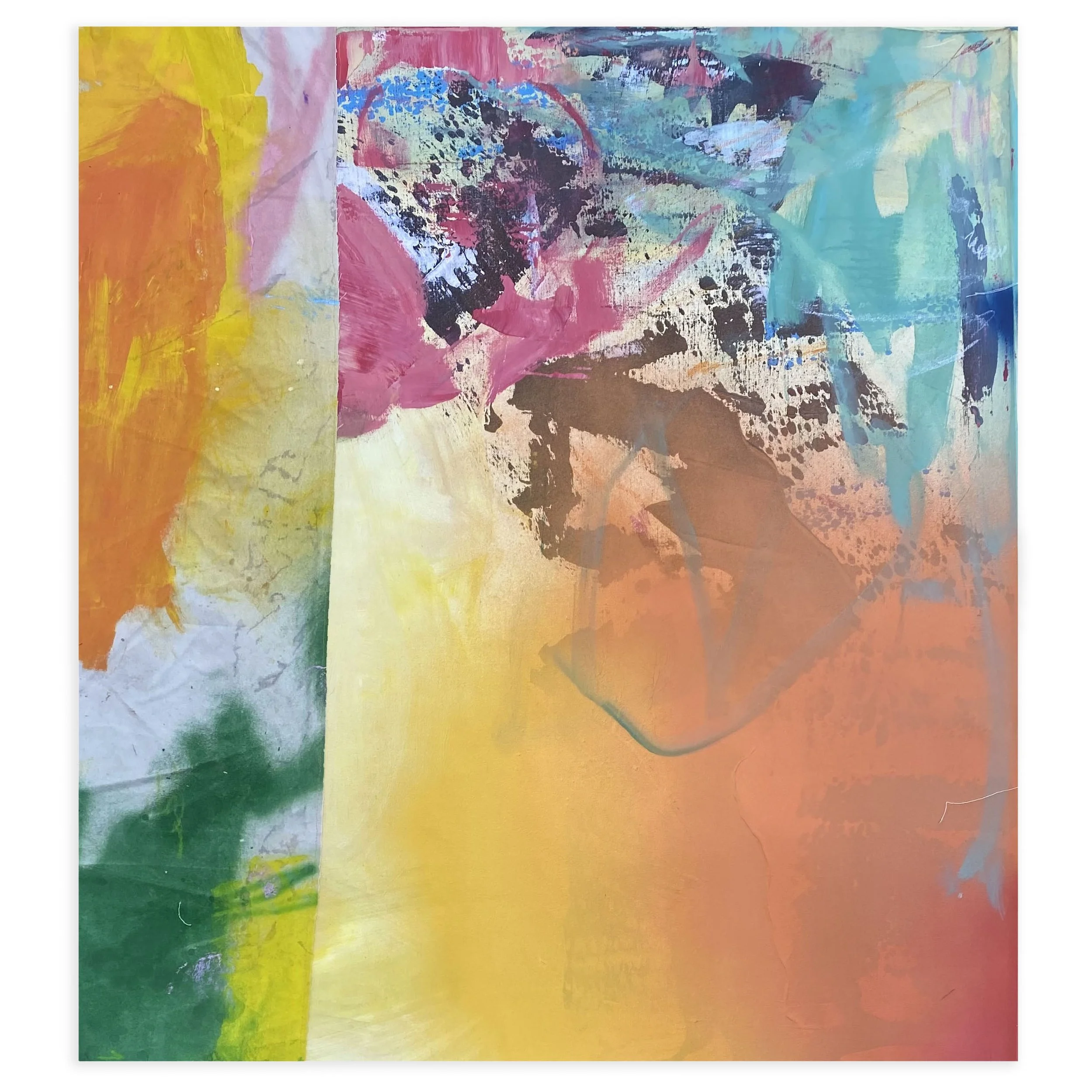“Machina” (2025)
Solo exhibition @ K Contemporary (Denver, USA)
//
Romelle’s first solo presentation at K Contemporary converts the gallery’s Project Space into an abstracted record of her travels in Mexico. Humming with movement – the human vs. mechanical kind -- Machina was created while Romelle was living and working between Mexico City, Guadalajara, and Northern Mexico. Taking shape in shared living rooms, makeshift studios, and on warehouse walls, the work shows she’s more comfortable on the move than she is standing still. Each work carries the memory of its place, with remnants of locations sometimes literally sewn onto the canvas. The artist emphasizes the improvisational and the handmade, with both neon and simulated light infusing paintings that reference emotional and physical moments in space and time.
Drawn to materials found both in the studio and on the street, Romelle uses spray paint and neon in addition to oil pastel. Accompanying her from destination to destination, her canvases were frequently folded into carry-on suitcases, constantly renewing and abrading themselves like the sun-faded urban walls and billboards she passed on her travels. Her paintings, like each town’s outdoor murals and graffiti, became a record or patchwork of active city life, persisting in their vitality while showing signs of age. Some pieces, like Billboard Painting #1, were machine-stitched to keep them intact, while others only appear that way. A series of neon forms in Handstyles: Assembly reflect the cadence and repetition of an object produced on an assembly line, yet mimic the spontaneity of hand-painted spray paint. Doug Kacena, K Contemporary’s owner and curator comments, “It’s the small human shifts in Romelle’s work that counter any suggestion of mechanical rhythm or conformity. The fine distinctions in her abstractions are in the nuances between hardness and softness; neon tubes vs. hand gestures, and the machine-stitched vs. paint-simulated seams on her canvases.”
Originally from the Detroit area and based in Mexico, Romelle and her work are grounded in ideas around transition. Her practice reflects her internal and external environment – both in a steady state of physical, cultural, and emotional flux. Concepts of change and adaptation are ingrained in her practice. Machina marks Romelle’s return to Denver and her work’s gradual return to cohesion after a focus on disruption. While her past projects have emphasized healing, Machina arrives at something more assertive. If you’re paying attention, you’ll see how she references life’s inevitable fault lines through her visible canvas seams, telegraphing how her sewing machine and inner emotional circuitry reliably hum even when enlisted to repair.











